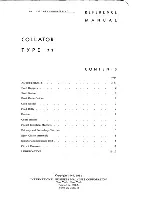
GB
81
Ot
her
s
The image is whitish (Flare).
Blurring of light appears on the image (Ghosting).
• The picture was taken under a strong light source, and excessive light has
entered the lens. When using the zoom lens, attach a lens hood.
The corners of the picture are too dark.
• If any filter or hood is used, take it off and try shooting again. Depending on
the thickness of the filter and improper attachment of the hood, the filter or
the hood may partially appear on the image. The optical properties of some
lenses may cause the periphery of the image to appear too dark (insufficient
light). You may compensate for this phenomenon with [Lens Comp.:
Shading].
The eyes of the subject come out red.
• Activate the Red Eye Reduction function.
• Get close to the subject, and shoot the subject within the flash range
(page 49) using the flash.
Dots appear and remain on the LCD monitor.
• This is not a malfunction. These dots are not recorded (page 82).
The image is blurred.
• The picture was taken in a dark location without the flash, resulting in
camera shake. The use of a tripod or the flash is recommended (page 23).
[Hand-held Twilight] in [Scene Selection] (page 45) and [Anti Motion Blur]
(page 45) are also effective in reducing blur.
The exposure value is flashing on the LCD monitor.
• The subject is too bright or too dark for the metering range of the camera.
Images cannot be played back.
• The folder/file name has been changed on your computer.
• When an image file has been processed by a computer or when the image file
was recorded using a model other than that of your camera, playback on your
camera is not guaranteed.
• The camera is in USB mode. Delete the USB connection.
Viewing images
















































